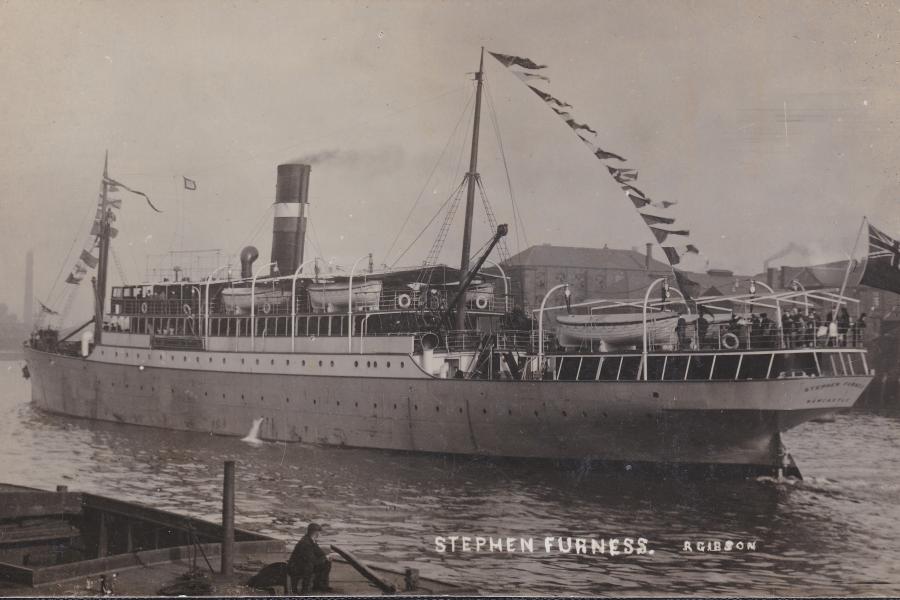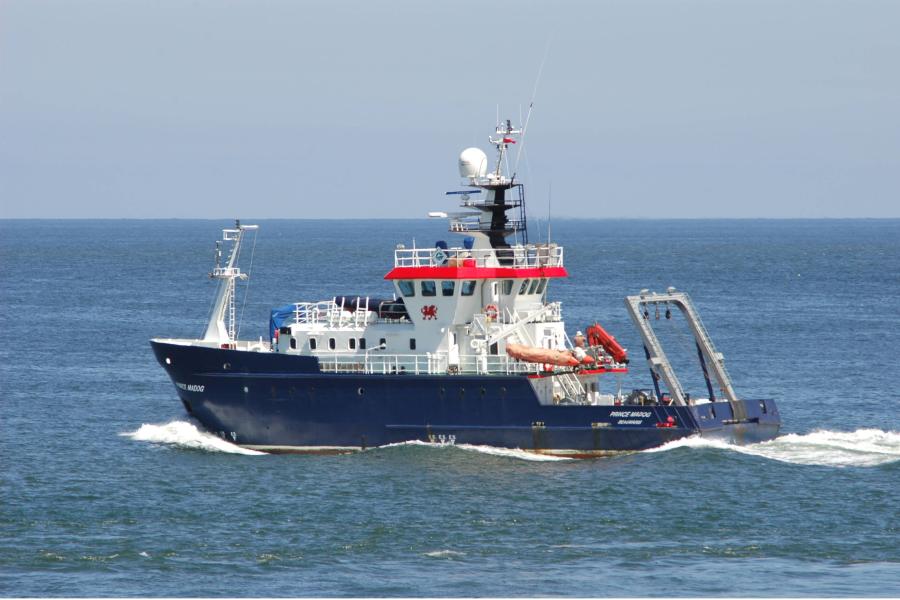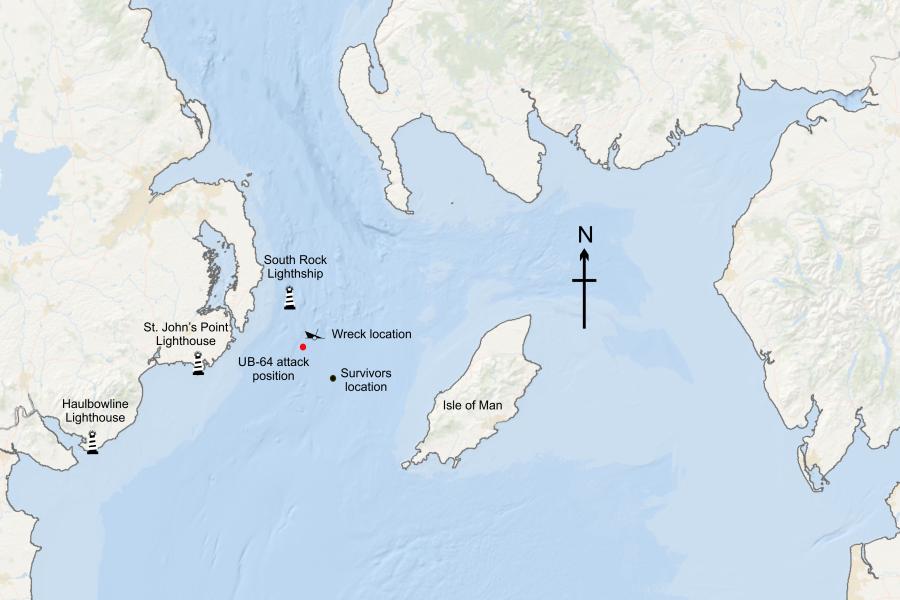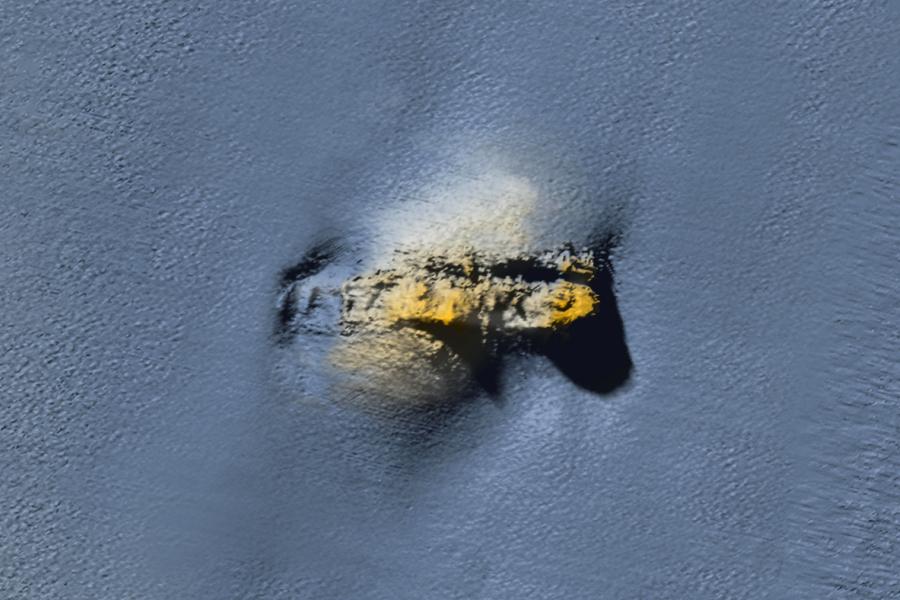[ad_1]
Researchers have positioned what they imagine is the wreck of HMS Stephen Furness, a WW1 armed boarding steamer sunk in 1917 within the Irish Sea.
The invention types a part of the “In the direction of a Nationwide Assortment” venture from the UKRI Arts & Humanities Analysis Council (AHRC), an initiative designed to hyperlink separate collections in UK museums, galleries, libraries and archives right into a everlasting community.
Monitoring down Stephen Furness featured in one in all 5 sub-projects: the three-year, £2.9 million Unpath’d Waters collaboration of 25 UK organisations led by Historic England (HE).

The 88m steamer had been inbuilt West Hartlepool as a passenger vessel for the Tyne Tees Steam Delivery Co, named after its chairman and launched in 1910 to hold as much as 370 passengers between Newcastle and London.
The Stephen Furness turned a Royal Navy armed boarding steamer when WW1 broke out, serving on the path to Murmansk in Russia. The duty of such ships was to implement blockades by intercepting and boarding overseas vessels.
She was heading from Lerwick to Liverpool for repairs on 13 December, 1917, when she was noticed by the German submarine UB-64 within the North Channel, 16km east of the doorway to Strangford Loch and west of the Isle of Man.
A single torpedo caught her between bridge and funnel, leading to a boiler explosion. The vessel sank in solely three minutes, earlier than her lifeboats could possibly be launched, inflicting the deaths of 95 crew and 6 officers. Solely 12 males survived.
90m deep
Multibeam sonar-scanning knowledge collected by Bangor College’s analysis vessel Prince Madog was used to analyse the scale of plenty of wreck-sites within the area, and this data was mixed with archival assets such because the war-logs of German U-boats.

The group additionally studied simulations of wind and tidal circumstances on the time of the sinking to hint the ship’s final moments, primarily based on the dispersal of 4 our bodies that had been discovered far-off alongside the coast of North Wales.
The outcomes prompt that meteorological information and hindcast fashions could possibly be used extra typically to assist pinpoint lacking vessels when different positional data was restricted.
The wreck lies 90m deep and was beforehand considered that of the Swedish cargo vessel Maja, torpedoed with the lack of 9 lives a month earlier than the struggle ended. The researchers now imagine they’ve positioned Maja’s stays a number of miles additional south.
“The doubtless identification of HMS Stephen Furness is a superb and shifting instance of the potential of the UK’s maritime heritage knowledge and an affidavit to the Unpath’d Waters’ group’s collaboration and glorious detective work,” commented HE’s Barney Sloane, Unpath’d Waters’ principal investigator.
“The UK’s maritime heritage is extremely wealthy, and our venture aimed to discover how we are able to entry, hyperlink and search this heritage in new methods to create new information and tales. This result’s a exceptional instance of simply how necessary such an endeavour will show to be.”

Dissolved limitations
“This exceptional discovery demonstrates what could be achieved when cultural heritage organisations come collectively to push forwards the event of an inclusive, unified, accessible, inter-operable and sustainable UK digital assortment,” stated In the direction of a Nationwide Assortment’s programme director Rebecca Bailey.
“In the direction of a Nationwide Assortment is about connecting and opening entry to UK heritage – for everybody, not simply educational researchers. We need to dissolve the limitations between individuals, collections and analysis – massive and small, scientific and cultural, nationwide and regional.
“The 4 sailors that washed up on the coast of North Wales offered a possibility to make use of revolutionary scientific evaluation to tell our concept in regards to the wreck. Nevertheless, you will need to take a look at the larger image right here; regardless of the place the wreck of HMS Stephen Furness ended up, these had been 4 males out of over 100 that misplaced their lives when the ship sank.
“It’s simple to get wrapped up within the pleasure of looking for a misplaced shipwreck, however additionally it is necessary to recollect the human tragedy that’s inextricably linked.”

Remembrance weekend with PADI
Coaching company PADI is inviting divers to discover the wrecks of WW1 and WW2 wrecks on guided dives with partnered dive-centres across the UK this weekend, with Remembrance Sunday on 10 November and Remembrance Day on the Monday.
Taking part centres together with Aquanaut Scuba & Snorkelling Centre, Dive Rutland, DiveUK, DV Diving, Gatwick Scuba, Indigo Elite Divers, Ocean Turtle Diving, Previous Harbour Dive Centre, ORCA Scuba Diving Academy, Oyster Diving and Teign Diving Centre have dedicated to supporting the creation of experiences that “join divers with each the previous and the ocean’s future”, says PADI.
The dives are promised to “mix respectful remembrance with the chance to grasp these historic websites from a brand new perspective”. Contact your nearest PADI dive-centre for extra data.
Additionally on Divernet: HOW WE DISCOVERED THE WRECK OF A TORPEDOED WW1 BRITISH SHIP, THAT’S NO SUB: HMS MERCURY WRECK IDENTIFIED, ARCHAEOLOGICAL DISCOVERY OF WWII LCT 326 ALTERS BRITISH NAVAL HISTORY
[ad_2]



